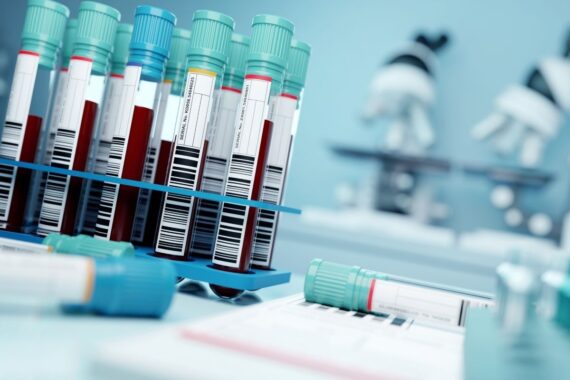Patients prefer having tests done at their GP practice over community diagnostic centres (CDCs), a new survey has found.
A poll by Healthwatch revealed that patients prefer to go to their GP (38%) or a hospital (22%) rather than a diagnostic centre in a community location (6%).
It comes as the national community diagnostic centre (CDC) programme is in its third year, with 170 sites across England.
According to NHS England data, 165 are sites are currently ‘operational’ as part of the programme in shopping centres, university campuses and football stadiums.
Of these, 135 are operating from their permanent CDC building and the rest from temporary sites while the CDC building is completed.
They offer diagnostic tests ‘closer to home’ and ‘greater choice’ on where and how they are undertaken and have so far delivered over 9 million tests, checks and scans.
In January and February, Healthwatch visited some of these sites across the country, including temporary and permanent sites in different types of locations, and in rural and urban areas, to find out about people’s experiences using the CDCs.
They also commissioned a representative poll of 2060 people in England to understand people’s expectations and preferences about diagnostic services.
Their report said: ‘In our polling, people said they’d prefer to go to their GP (38%) or a hospital (22%) rather than a diagnostic centre in a community location (6%).
‘However, our interview data suggests that preferences will shift over time as awareness and experience of CDCs grows.
‘Our findings show how important it is that people know about CDCs and what they offer. People should be supported to make an informed choice about which service is right for them, whenever possible.’
There are a minimum set of core tests for standard CDCs, including MRIs, CT scans and phlebotomy, as well as optional tests that can be added where appropriate and a priority locally, including mammography, dermoscopy and audiology services.
Their report also found that:
- Almost everyone (93%) they spoke to had ‘good experiences’at CDCs;
- Almost a third of the general public (31%) said getting the tests done quickly ‘was their top priority’ when choosing where to get a diagnostic test;
- Most people weren’t offered a choice of location (78%) or time (61%) around their appointments – people said they would have liked a choice when the appointment given wasn’t ideal for them;
- Visiting the CDC was ‘convenient for most people’ Healthwatch spoke to – 70% arrived in less than 30 minutes, and 26% arrived in less than an hour;
- But people said there were issues ‘caused by a lack of information about how to get to the site’.
Healthwatch said that a formal evaluation of the CDC programme is needed to ‘assess its impact’ on overall diagnostic activity, workforce and capital allocation, patient safety and experience, and effects on health inequalities.
Their local teams found accessibility issues at several sites, including:
- Failing to meet people’s communication needs;
- Barriers for Deaf people and people experiencing hearing loss;
- issues with English language interpretation;
- barriers for people with mobility difficulties, Autism, and dementia;
The report added: ‘Feedback on the CDC programme received by Healthwatch England is overwhelmingly positive. However, there still may be challenges that stand in the way of the CDC programme reaching its full potential.
‘A comprehensive assessment should be conducted to ascertain the difference CDCs have made for patients and the wider health system.’
And NHS England has said that CDCs are to be evaluated against their activity plans and aims within the 2024/25 financial year.
Pulse October survey
Take our July 2025 survey to potentially win £1.000 worth of tokens














Having recently been sent to one of these places to see a dermatology photographer (not a dermatologist I might add) following a 2WW dermatology referral for a potential cancer, I can quite understand why few people like them. Weirdly in the middle of one of the most densely populated terraced areas of the city I’d never been to, nowhere to park, obscene traffic, only genuinely ‘local’ to the few people living in adjacent streets..I obviously arrived late and they refused to see me. An appointment with a photographer who was then going to email a photograph to a Dr just a couple of miles away in a hospital I would have happily visited easily. Ridiculously complicated and expensive- but WTF it sounds good to someone in an NHSE office planning all this shite. I paid to see a dermatologist privately for £200 and visited them painlessly. I can guarantee the NHS’s failed attempt to get me to see a photographer cost the tax payer CONSIDERABLY more what with all the dumb ass appointment booking center call backs, letters and allied health professionals employed trying to prevent me from actually having to see an actual Dr. Its NUTS. But something else I can guarantee is the soon to be announced Darzi report on the NHS will recommend many more of these stupid money pits at the expense of just paying to employ some feckin Drs. NHS management in the 21st century is a UK government reimagining of the 20th century USSR planned economy. Everything run from the center. Independent well trained practitioners like GPs trusted to get on with it. Absolutely not. Centralised control enacted through pseudo local diagnostic center…some and mirrors and fundamentally confused and dishonest.
correction I meant ..”smoke and mirrors” (and if you managed to read that far, congratulations and thanks)
of course. With a cup of coffee and a biscuit to boot. And a GP appointment just while you are there to deal with 4 things in 10 minutes. who doesn’t want that?